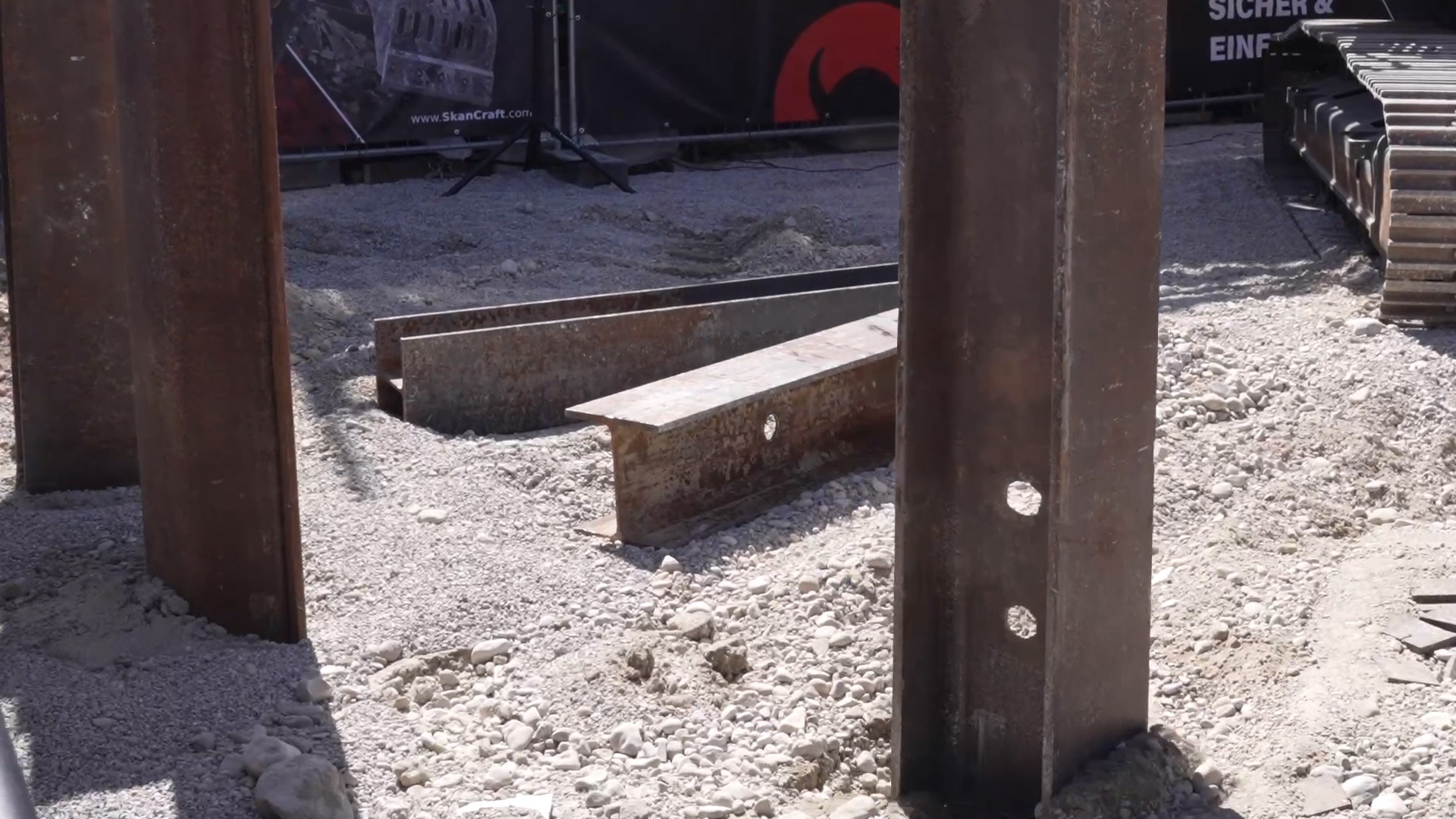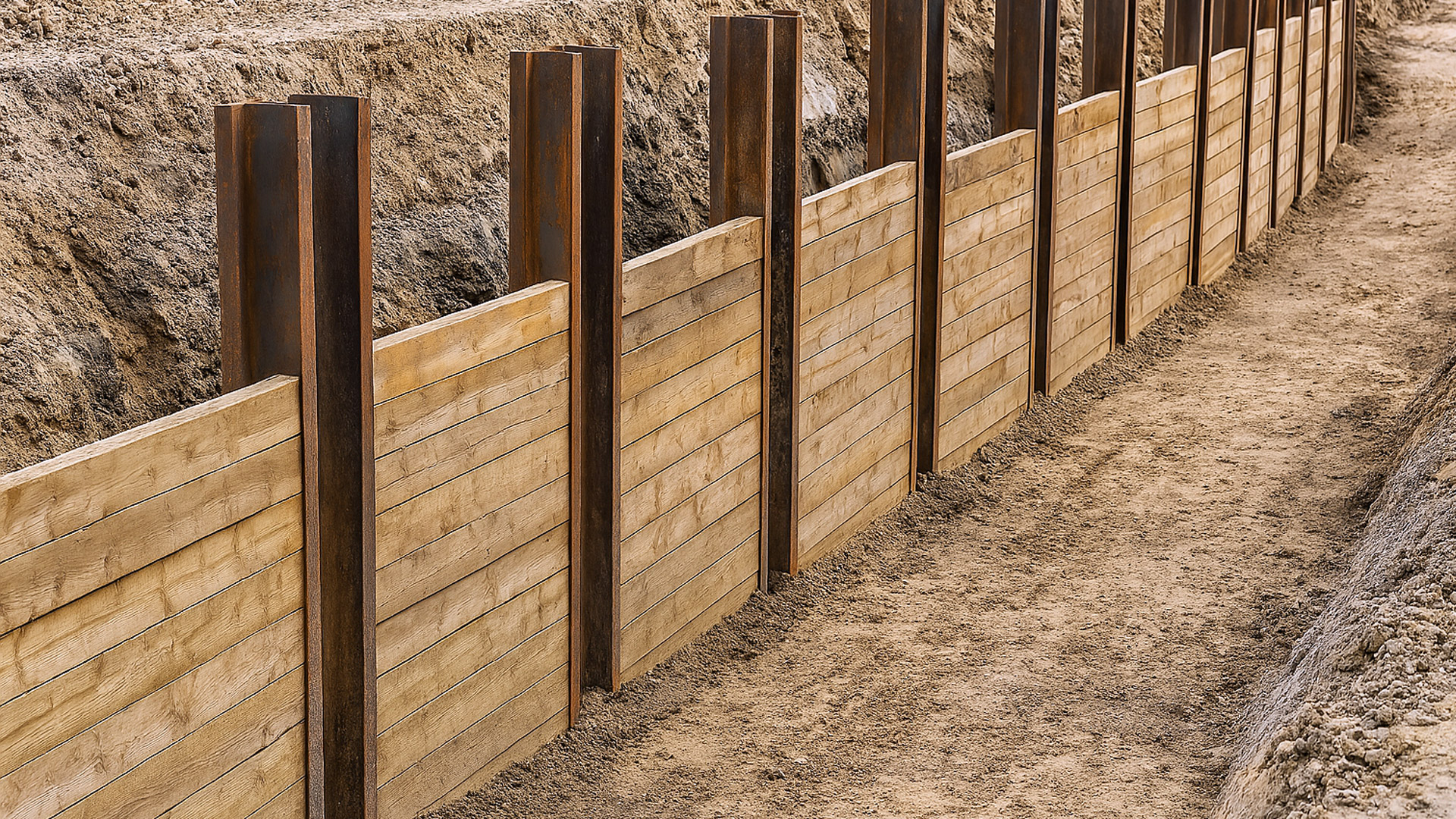Berlin shoring is one of the classic methods in the field of excavation and trench shoring. It is used to absorb lateral earth pressure forces during the construction phase and to protect adjacent structures or traffic areas. The method is comparatively easy to implement, can be used flexibly and can be permanent or temporary, depending on requirements. Berlin shoring has proven its worth for decades, especially on inner-city construction sites or in confined spaces.
The core of the process is a combination of vertical steel profiles - usually HEB or IPE beams - and a horizontal infill, for example in the form of wooden planks, steel plates or prefabricated elements. The steel beams are first inserted into the ground. This is done either by ramming, drilling with subsequent backfilling or pressing into prefabricated guides. The beams depend on the planned excavation route.
The next step is to excavate the construction pit in sections. At the same time, the infill is inserted between the steel girders - classically in the form of wooden planks, which can be moved up or replaced depending on the depth and load case. This creates a stable shoring that absorbs the earth pressure and prevents the ground from slipping.
Typical applications for Berlin shoring can be found in sewer construction, house connections, pipe work or smaller excavations, especially in inner-city areas. Due to its modular structure, the method is particularly suitable for


Berlin shoring impresses with its simple implementation, short preparation time and high reusability of the components. The steel beams and planks can be dismantled after completion of the construction work and reused on other construction sites. In addition, only minimal machine access is required, which means that they can also be used in densely built-up inner cities or rear courtyards. Compared to other shoring methods such as sheet piling or diaphragm walls, Berlin shoring is more cost-effective and quicker to construct - however, it is only suitable for limited depths and medium loads. In the case of more demanding structural requirements or groundwater problems, the method reaches its limits, which is why special sealing techniques or alternative systems are used here.
Despite modern alternatives, Berlin shoring is still one of the standard solutions in civil engineering. Its versatility, cost-effectiveness and ease of use make it a popular method for temporary shoring work, particularly in urban areas. For companies that are regularly involved in sewer, cable or foundation work, Berlin shoring remains a tried and tested method - technically mature, efficient and with a high reuse value.